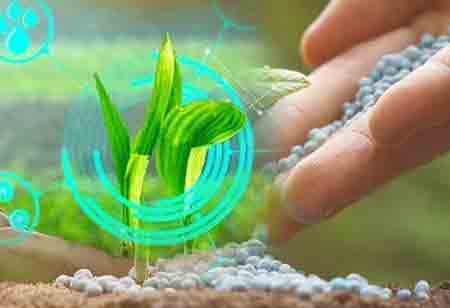Thank you for Subscribing to Agri Business Review Weekly Brief
Biostimulant Manufacturing Innovations for Sustainable Farming
Innovations in biostimulant manufacturing enhance sustainable agriculture by improving plant health, nutrient absorption, and resilience while reducing reliance on chemical inputs for better environmental practices.

By
Agri Business Review | Friday, October 18, 2024
Stay ahead of the industry with exclusive feature stories on the top companies, expert insights and the latest news delivered straight to your inbox. Subscribe today.
Innovations in biostimulant manufacturing enhance sustainable agriculture by improving plant health, nutrient absorption, and resilience while reducing reliance on chemical inputs for better environmental practices.
FREMONT CA: Biostimulant manufacturing innovations are pivotal in promoting sustainable farming practices, offering environmentally friendly alternatives to traditional fertilisers and pesticides. The industry is undergoing a significant transformation, moving beyond traditional methods that rely on a blend of organic materials and essential nutrients. Recent innovations have introduced advanced technologies and formulations, marking a new era in biostimulant manufacturing that holds the potential to modify agricultural practices.
Innovative approaches in microbial biostimulants are gaining prominence, with companies now leveraging advanced biotechnological techniques to isolate, culture, and mass-produce beneficial microorganisms. These microbial formulations, enriched with chitin and chitosan, create symbiotic relationships with plants, enhancing nutrient absorption, boosting disease resistance, and promoting overall plant health. Incorporating chitin, a polysaccharide derived from the exoskeletons of arthropods, and its derivative, chitosan, is particularly significant. When used in microbial biostimulants, they are potent agents that activate plant defence mechanisms while improving nutrient uptake efficiency, thus contributing to robust plant growth and resilience against environmental stressors.
The advent of nanoformulations has brought about a precision agriculture approach that focuses on breaking down biostimulants to the molecular level for improved efficacy. By utilising chitosan nanoparticles, these formulations enhance the absorption and transportation of nutrients within plants, maximising the impact of biostimulants and reducing the necessity for excessive applications. This innovation promotes sustainable farming practices by ensuring that plants receive optimal nutrition precisely where needed, leading to healthier crops with increased resistance to pests and diseases. The lower application rates associated with these nanoformulations also support resource efficiency and environmental sustainability.
Another noteworthy advancement in biostimulant manufacturing involves using elicitors enriched with chitosan derivatives. These compounds stimulate the plant's natural defence mechanisms, enabling it to respond more effectively to various stressors, including pests, diseases, and adverse environmental conditions. Chitosan, known for its antimicrobial and antifungal properties, enhances the effectiveness of these biostimulant elicitors, empowering crops to withstand challenges without excessive reliance on chemical interventions. This supports farmers' financial interests and aligns with the increasing demand for sustainable and eco-friendly agricultural practices.
The customisation of biostimulant formulations represents a significant leap forward in the industry. Advancements in manufacturing techniques allow for the creation of tailored biostimulants that incorporate chitin and chitosan, designed explicitly for particular crops and growth stages. By gaining insights into the unique requirements of different plants, manufacturers can optimise nutrient compositions and application methods to ensure each biostimulant meets the precise needs of its target crop. This shift towards precision agriculture emphasises that biostimulants should not be one-size-fits-all solutions but tailored interventions that maximise the potential of each crop. Adjusting nutrient ratios, incorporating specific microorganisms, and fine-tuning concentrations of chitin and chitosan all promote sustainable and efficient agricultural practices.
By leveraging cutting-edge technologies, such as microbial formulations enriched with chitin and chitosan, nanoformulations for precision agriculture, and targeted elicitors, the industry is setting new standards for crop health and resilience. These developments enhance nutrient absorption and plant defence mechanisms and also reduce the need for chemical inputs, aligning agricultural practices with eco-friendly principles. As the demand for sustainable agriculture continues to grow, these innovations in biostimulant manufacturing will play a crucial role in fostering a more resilient and productive agricultural landscape, ultimately contributing to global food security and environmental sustainability.





